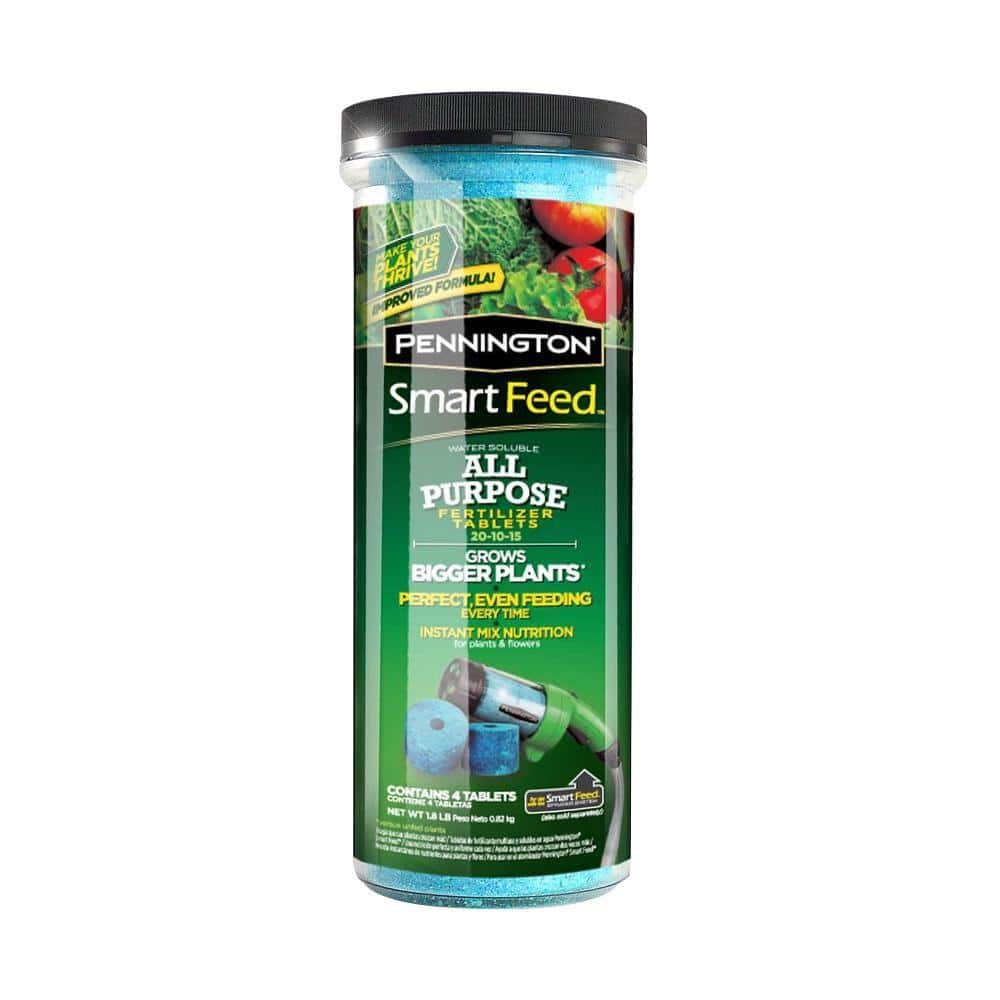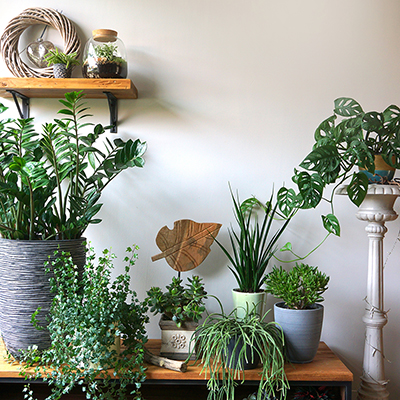Indoor Plants That are Easy to Maintain

Last updated September 7, 2023
When you choose the right houseplants, you will feel like a successful gardener from the start. Below are several “brown-thumb-proof” favorites. Any one of these hardy houseplants will brighten your rooms and boost your confidence as a plant owner.
Table of Contents
Snake Plant (Sansevieria Trifasciata)
Dieffenbachia
Pothos (Epipremnum Aureum)
Cast Iron Plant (Aspidistra Elatior)
Peace Lily (Spathiphyllum)
Croton (Codiaeum)
Snake Plant (Sansevieria Trifasciata)
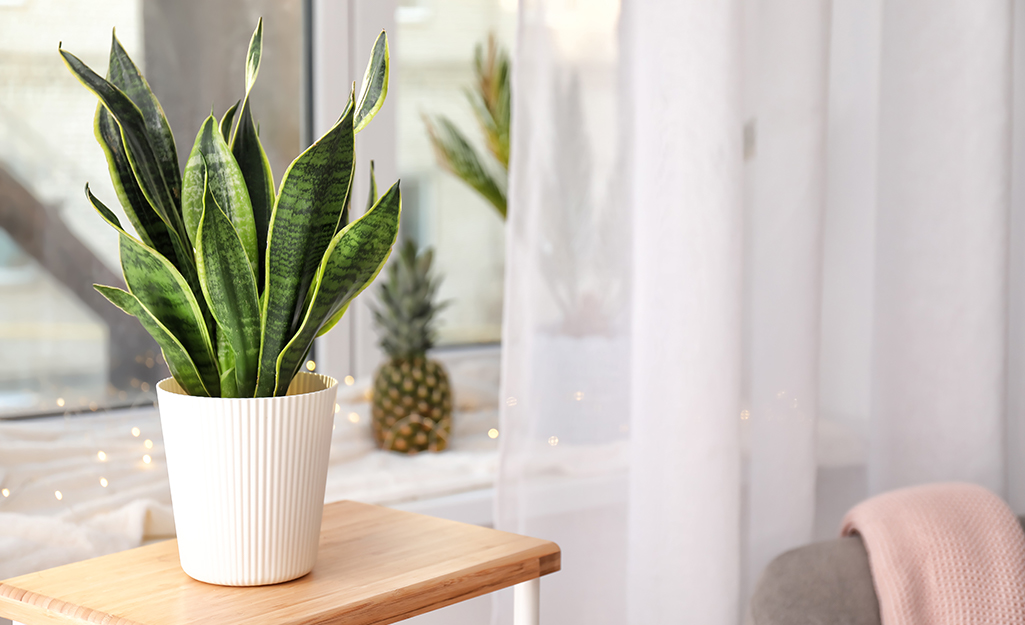
Even if snakes make you shiver, don’t let this plant’s common name turn you off. Snake plants (also known as Mother-in-Law's Tongues) are tough-as-nails, with thick, stiff leaves. While they prefer bright light, they’ll do fine in low to medium light. Keep your plant moderately watered and let it dry out between drinks. Sansevierias are part of the succulentfamily, so they’re easy to care for. Look for varieties with striped, variegated or dark green leaves.
Dieffenbachia

Also called dumb cane, dieffenbachiais a plant that produces a poisonous sap in its leaves and stems that can burn your mouth and even temporarily paralyze your vocal chords. It’s not a plant to grow around children who might touch it or pets that might be tempted to chew. If you handle a dieffenbachia, be sure to wear gloves or wash your hands thoroughly when you’re finished.
Aside from those cautions, dieffenbachia makes a great choice for locations that get bright but indirect light. Water when the soil feels dry below the surface, or more often if the edges of the leaves turn brown. Dieffenbachias have beautiful, variegated leaves. Native to the rain forests of Costa Rica and Venezuela, the plants have a tropical, exotic look.
Pothos (Epipremnum Aureum)
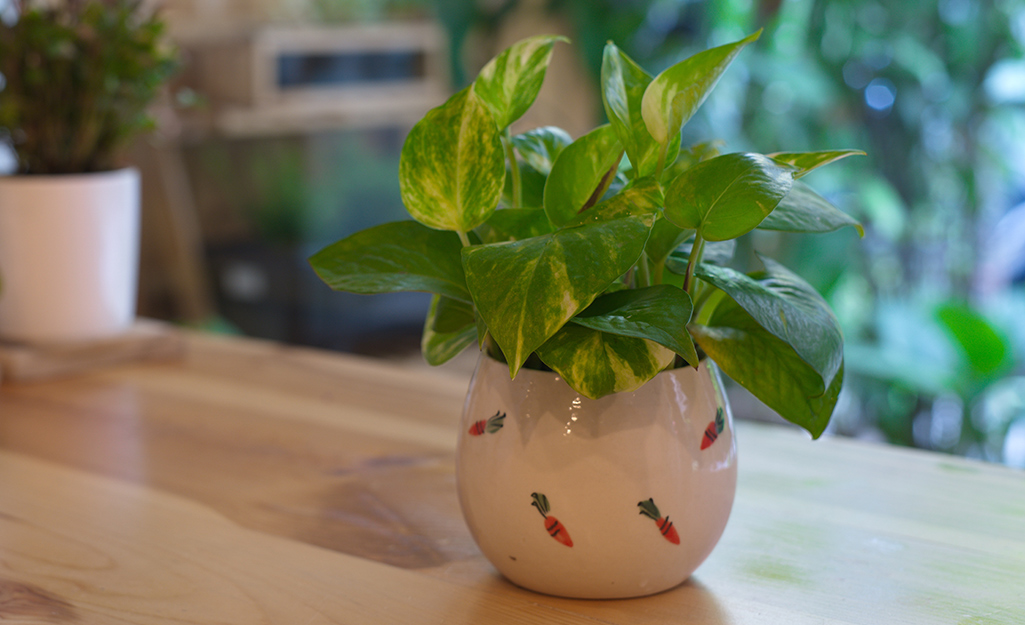
Make your cubicle or corner office feel more like a garden with a pot or hanging basket of pothos. These undemanding plants tolerate almost any growing conditions, and don’t mind artificial lights. Let the trailing stems cascade over the sides of a container, or train them on a support. When your plant starts to get out of bounds, snip it back. Pruning will encourage new growth at the base, so it becomes fuller and bushier. But don’t toss those cuttings. Give them to an office mate to root in a glass of water. It won’t be long before the cuttings will be ready to pot up as new plants. For a little extra color, grow the gold or variegated varieties.
Cast Iron Plant (Aspidistra Elatior)
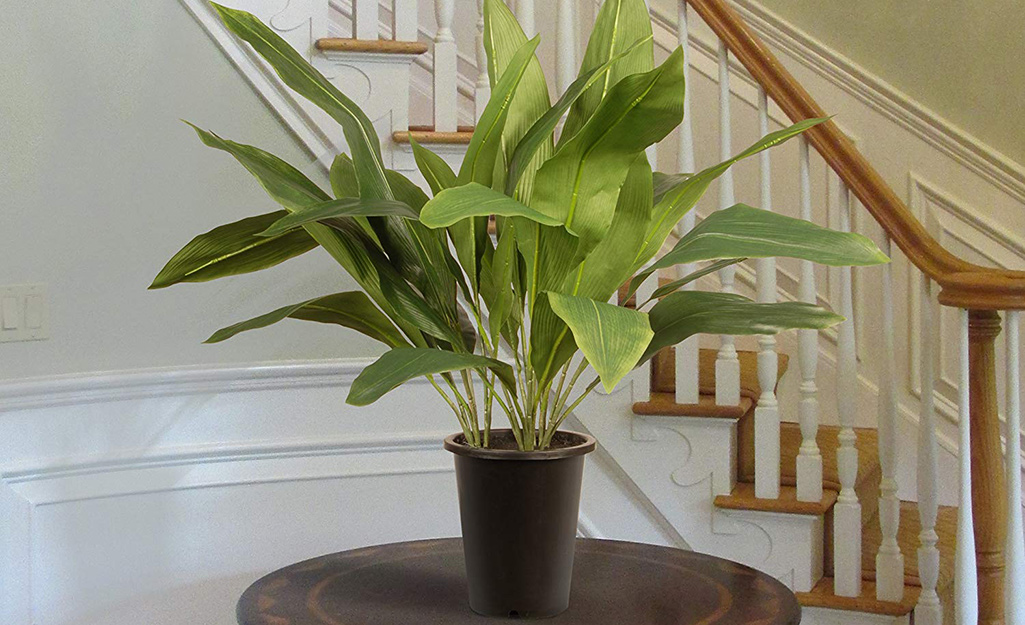
True to its name, the cast iron plant is almost indestructible. It is able to survive even in poor light; in fact, these plants like low light and extreme temperatures. Cast iron plants might be a bit plain-looking, but if you tend to water plants irregularly or otherwise neglect them, you can’t find a hardier species to grow. The leaves are sword-shaped and pointed. Most cast iron foliage is solid green, although a variegated variety with white stripes is sometimes available. While they’re often hidden by the foliage, small, brown-purple flowers often appear, followed by tiny, dark berries. But this isn’t a plant to grow for flowers. Instead, use it for its reliability and durability.
Peace Lily (Spathiphyllum)
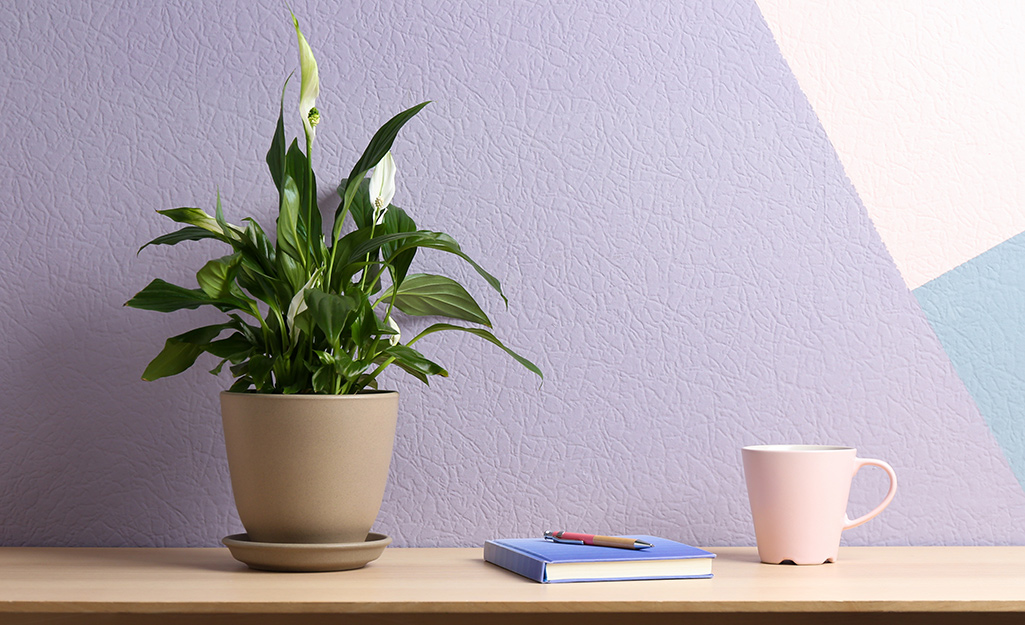
It can be tricky to get houseplants to bloom indoors (with the exception of African violets, some orchids and other plants), but peace lilies are as dependable as they come. Their glossy green leaves have been shown to help purify indoor air, and the plants thrive in bright, indirect light. Keep the soil moist, and feed it about every two weeks during the summer with a balanced 20-20-20 plant food.
Unlike lilies of the genuses lilium and hemerocallis, peace lilies are not typically deadly to cats, which makes them a great alternative to other household lilies for cat lovers. However, as with most household plants, you should discourage pets from attempting to chew on its leaves and stems.
Croton (Codiaeum)
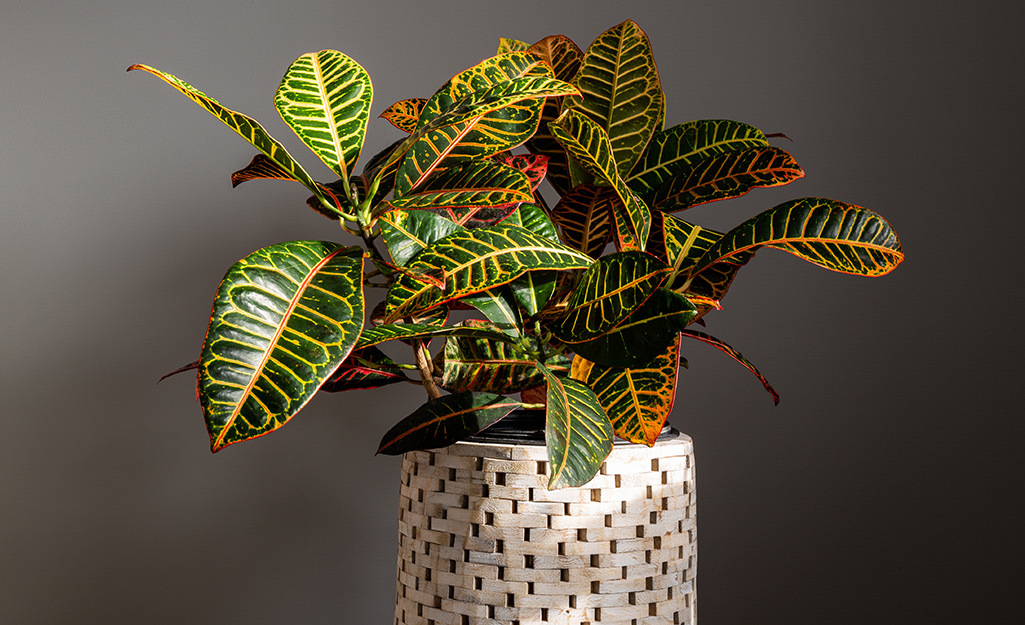
Croton plants have bold, rounded leaves that come in a wide range of colors including yellow, orange, red, green and black. To keep their leaves vibrant, place your croton in an area that gets plenty of light. Low light conditions will produce long stems and dull leaves.
Croton prefer moist, humid conditions. Ensure the pot drains well, and mist the plant once a week.
Overly wet or dry conditions can cause croton to drop its leaves. In warm summers, place it outside to add a tropical flair to your landscaping. Just remember to bring it indoors again when the temperatures drop to 50 degrees Fahrenheit or below.
Note that all parts of this plant are poisonous, so keep croton away from curious pets and children.
Aglaonema
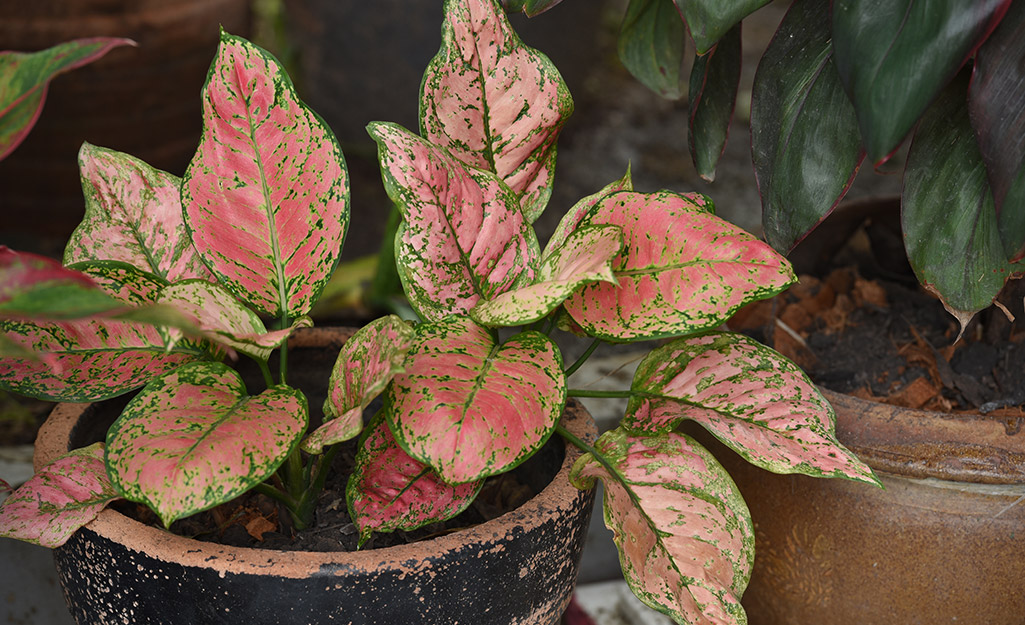
Although often called a Chinese evergreen, aglaonema can have either red or green patterned foliage.
This plant thrives indoors, since it prefers low to medium light and can still grow well under flourescent lights. Variegated varieties require more light, while varieties with dark green leaves do best in near shade. In higher light conditions, aglaonema will bloom.
Keep your aglaonema plant warm, away from drafty windows and vents, and regularly watered. Water whenever the soil becomes dry.
Dracaena

Dracaena is a tall-growing plant with a head of long yellow and green or red striped foliage. Some varieties can grow to about 3 feet tall on a winding, woody branch, while other varieties will stay low-growing and grass-like. Whether you have low, medium or high light conditions in your home, there is a variety of dracaena to suit you. Check the plant tag to learn how much light each variety can tolerate.
Keep your dracaena plant lightly watered, with moist but never soggy soil. Mist its foliage regularly. If the tips of its leaves turn brown, it may be due to low humidity. Trim away the brown tip and mist the leaves more often. If the leaves turn yellow and begin to droop, it may be due to overwatering. Note that dracaena sheds its leaves to grow new ones, so don't worry when you notice only the bottom leaves turning yellow and falling.
Safety Note: Dracaena is toxic to cats and dogs, so keep it away from your pets.
ZZ Plant (Zamioculcas Zamiifolia)
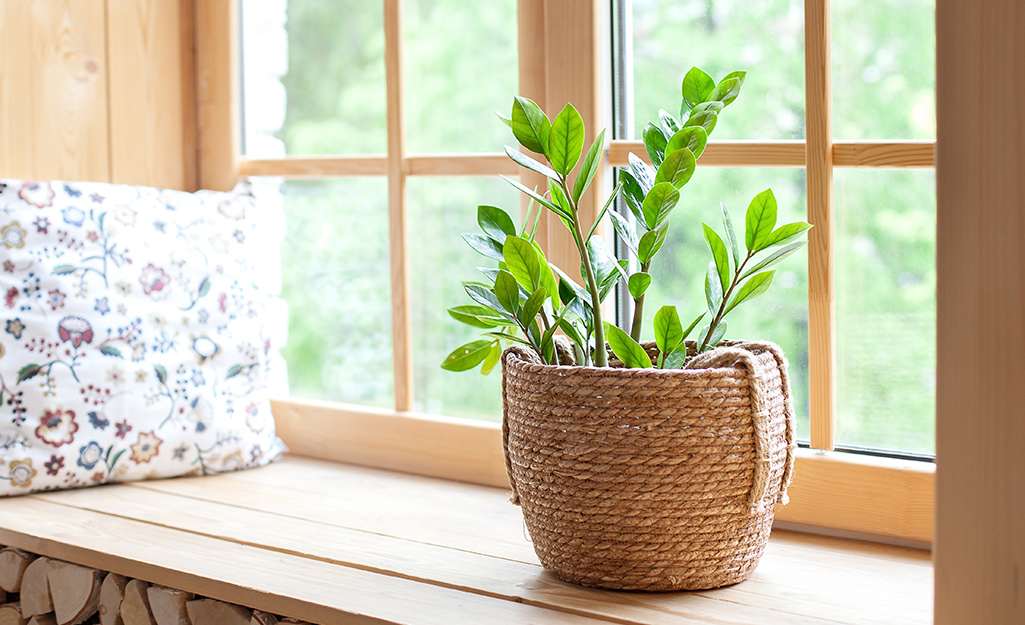
The ZZ plant is known by many names, including the Zanzibar gem, the eternity plant and the aroid palm.
This hardy plant has rich green and glossy leaves that reflect sunlight and create a striking accent in any home. Because it enjoys low light, low humidity and infrequent watering, the ZZ plant thrives indoors, where it also acts as an excellent air purifier.
Broken leaves or stems can be potted in soil to grow into an entirely new plant, making it a very forgiving and easy to propagate houseplant. All parts of the ZZ plant are toxic, however, so place it away from pets and children and wear gloves when handling broken leaves or stems to avoid skin irritation.
Succulents
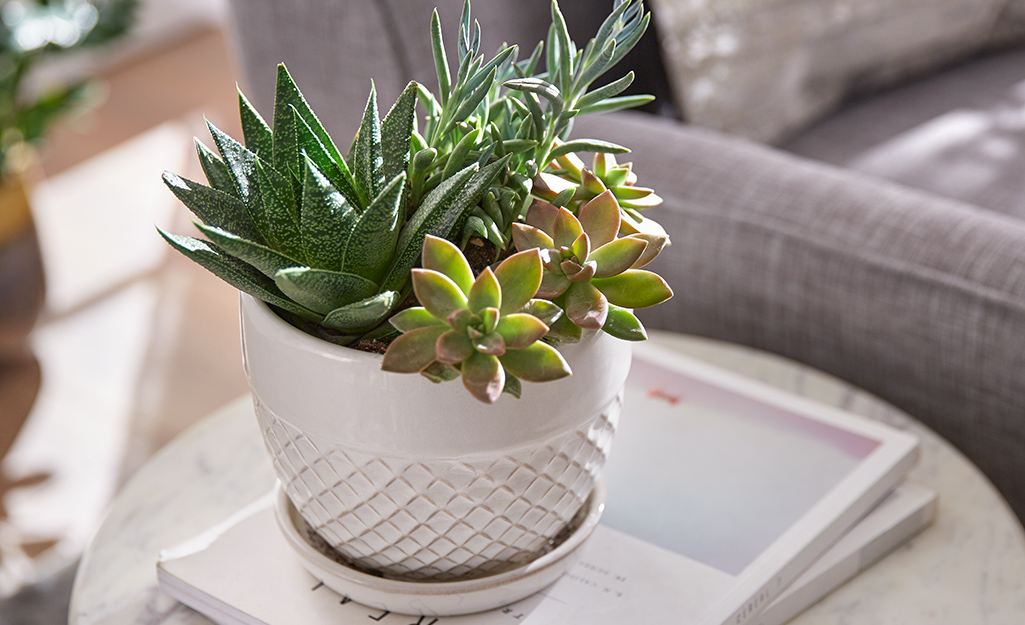
Succulents add drama and texture and can be clustered together in containers. Because succulents store water in their stems and roots, they require very little H20. Just give succulents a sunny spot in your home and water when the soil is completely dry. Because there are so many varieties of succulents, the best way to identify succulents is by their leaves. Succulents feature plump leaves in bright shades of green, pink, deep red, orange, purple, gray and blue. Sometimes, they’re a mix of several colors. Some of the more popular types include:
Echeveria:
- Waxy look with thick rosette leaves.
- Need sunlight.
Cressula:
- Most popular type is Jade.
- Looks like mini trees with woody stems.
- Oval-shaped leaves.
- Prefer moist soil in spring and summer; dry soil in fall and winter.
Sedum:
- With so many sedum varieties, it’s the ones with bright green leaves (sometimes with red edging) that thrive as houseplants.
- Donkey’s tail succulents are a type of sedum that grow in long, hanging bunches of small, blue-green bean-shaped leaves.
Kalanchoe:
- Big paddle-like leaves that get brilliant red edging when exposed to sun.
- Water sparingly when soil is dry.
- Takes indirect sunlight.
Hoya
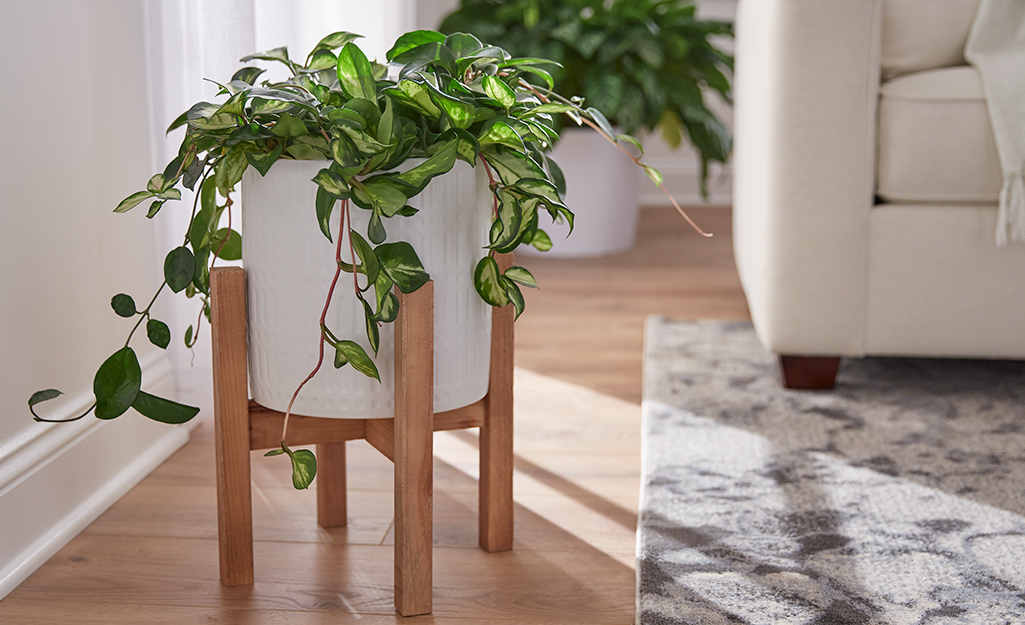
Sometimes called the wax plant, it has exotic looks and low-maintenance needs. Give this beauty bright light and plenty of water and you’ll be sharing it with the world for many years. Look for hoya in hanging baskets. However, it’s equally content in a container on a shelf or table where it can spread out its (slow-growing) vines.
Use The Home Depot app's image search to snap a picture of a plant you like and find more of what you want. Or talk to our experts at your local Home Depot Garden Center to explore other plant options that suit your home and skill level.

